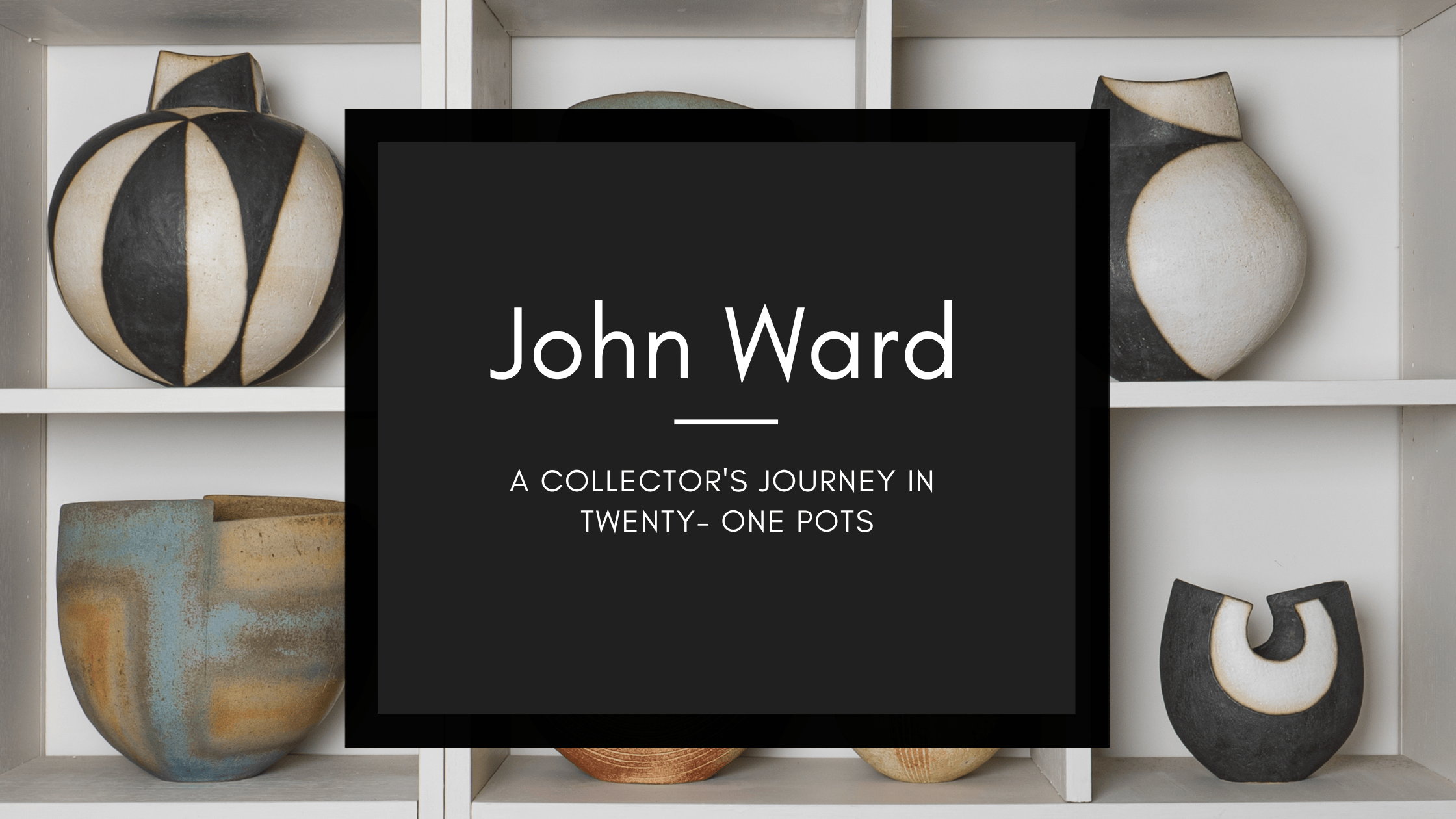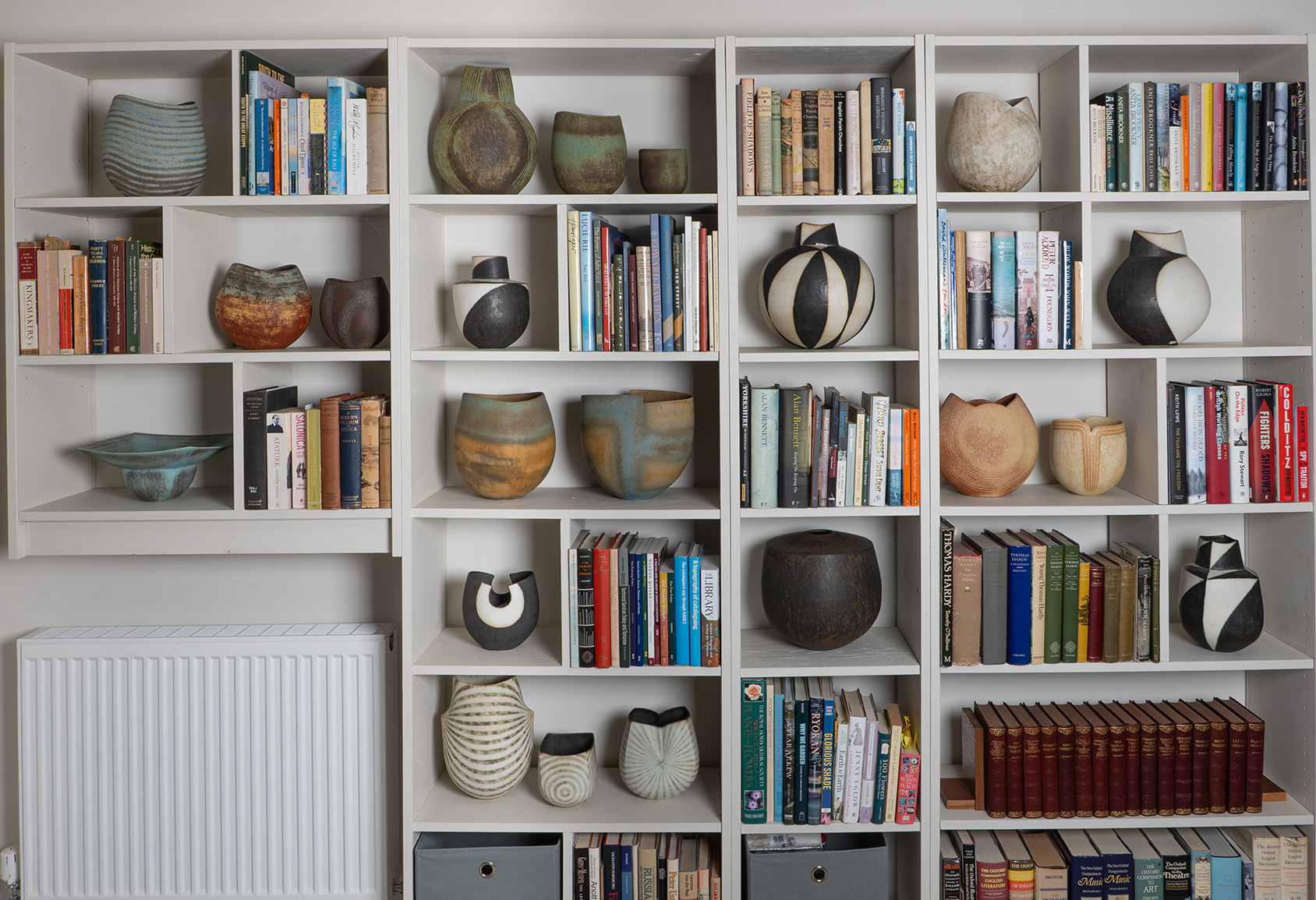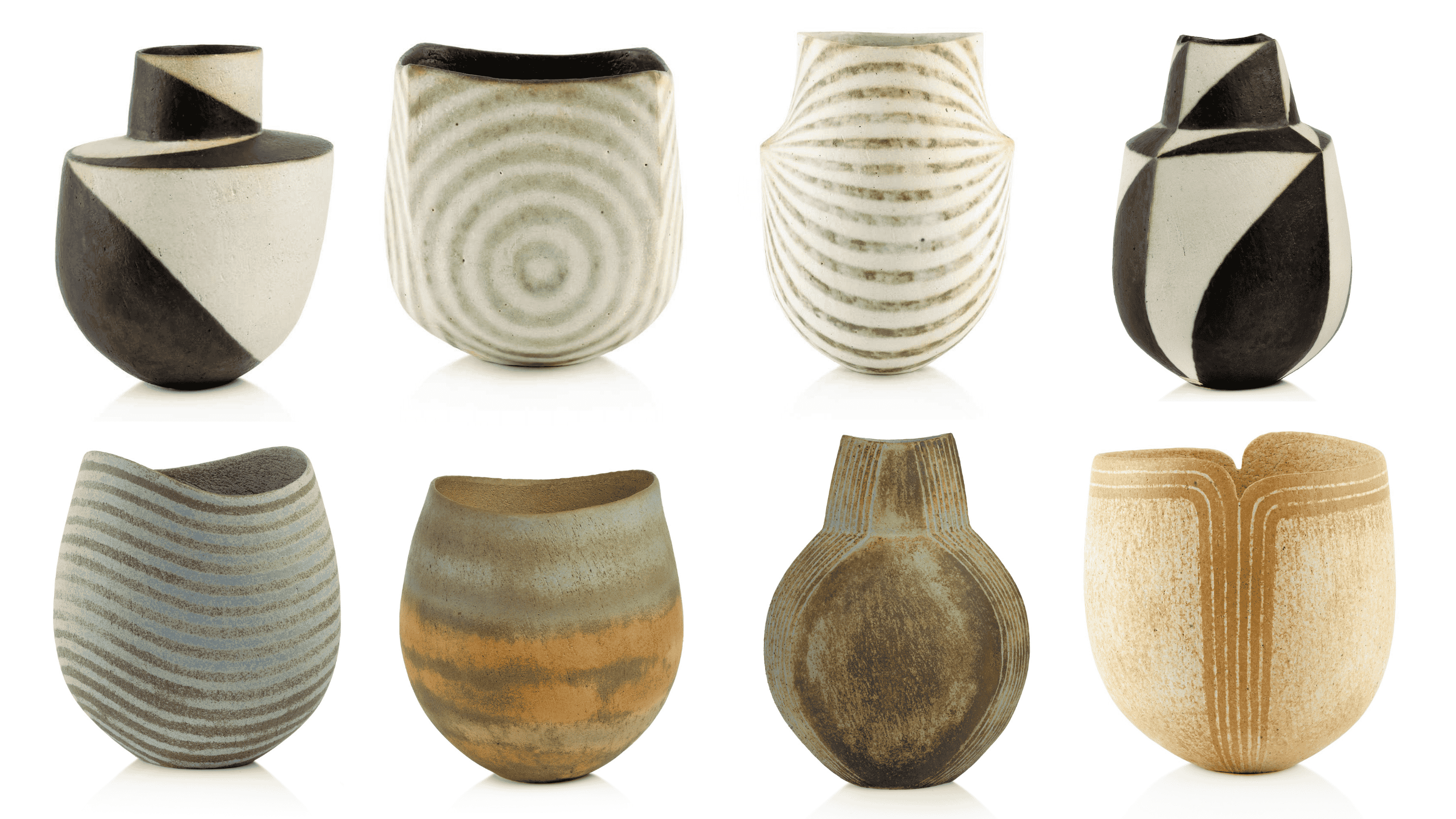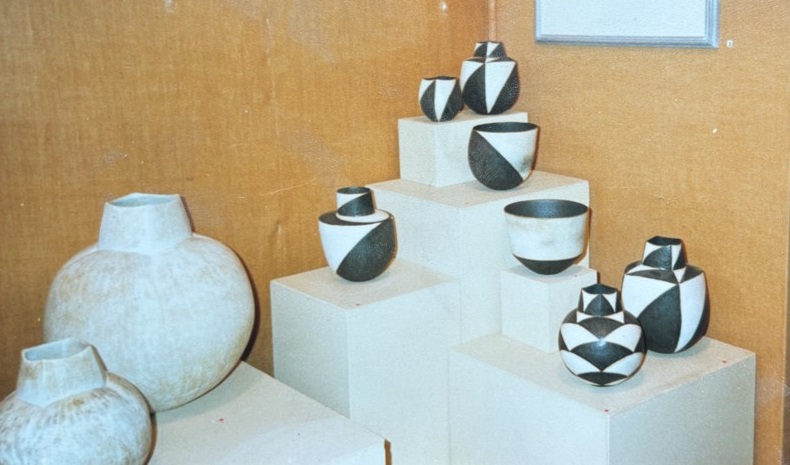

16/06/2025
Here, in twenty one pots we have so much of what made John Ward (1938-2023) distinctive as a potter, the range of shapes and surfaces a reflection of a very concentrated way of looking at the world, and defining ideas of structure and space in objects of great clarity and distillation. This significant group is also the result of two individuals' particular collecting eye, a great affection for Ward’s work that simply led from one piece to another, without thought of investment or building a ‘collection' as such, but driven on instead by a deeper admiration for what this artist was doing. These Wards have lived richly amongst the books, pictures and other pots acquired by a couple with a keen visual sense, and it is always moving to see ceramics just as they should be, as part of a broader mixture of objects, both special and more ordinary, in people's homes and lives.

Other potters that these collectors have bought and enjoyed include several from the Leach school such as William Marshall, Phil Rogers and Mike Dodd, as well as John Jelfs and John Maltby. On the walls are works by Eric Ravilious, Terry Frost and Bryan Pearce. But it is the Wards that have held a particularly special place here, a strong sense that it has been a shared journey for the collectors as well as the potter. As Ward’s biographer Emma Crichton-Miller has written, “Ward’s pots represent a continuous evolution of a series of fundamental forms; the bowl, the shouldered pot, the gourd-like jar, the disc-shaped vessel”, and this group amounts to a small retrospective.
The first piece they bought was in the 1980s, a small squared pot with a green and white banded design, spreading out from a centre on each side like ripples on water. It was purchased from the New Craftsman Gallery in St Ives, one of a small number of places from where they acquired their Wards over the next thee decades. Others included Amalgam, Tim Boon’s exceptional gallery in Barnes, and Peter Dingley and Guido Marchini's equally enterprising outlet in Stratford-upon-Avon. One piece came from a very local source, Oxford Gallery, and they returned to Tim Boon when more recently he had taken over Tony Birks' Alpha House Gallery in Sherborne.This is the best kind of collection, not one about large and showy numbers, but a very discriminating and select holding of small groups of particular shapes and ideas. It isn’t spread thinly, but investigates more meditatively and thoughtfully what John Ward was about, following various trajectories he took as he experimented and evolved, his tracks of thought. As one of these collectors remarked; “He was so inventive. One wondered what the next development would be. His exploration of form, of decoration and glazes, was always changing”.

Top row, left to right: lot 514, lot 500, lot 502, lot 513. Bottom row, left to right: lot 510, lot 512, lot 503, lot 506
Similar to that initial purchase in St Ives, there are two larger and more complexly conceived variations. One has a dipped rim, one of Ward’s familiar devices that adds a gentle undulating energy to his work. The other pot has the vestige of shoulders before narrowing into a neck. Both have the kind of head or torso frontality that hints at Cycladic figuration and other early ritual objects and sculpture. A variation on these striped shapes is a blue oval piece with a dipped rim that has more of that watery quality, evocative perhaps of the seascape of the Welsh coast so close to Ward’s Pembrokeshire studio. Another with a similarly coloured glaze is flatter and very open, with a broad flanged rim. A group of blue-green pots, one with a squared neck, and two simpler bowls, gently squeezed into ovals, have glazes rubbed through, giving an earthier character. They are particularly redolent of our native temperate climate, the colours and textures of field and stone, of mossy rocky places.There is a more pronounced sense of strata in three pots with bands of blue or blue-green combined with amber and russet, one of which is more textured and abraded. This approach is taken to a more complex level in the third example which has a cut and altered ’stepped' rim, its fields of coloration making this, like many of his pots, as much about abstract painting as sculpture. Again their spare simplicity brings to mind some of our oldest vessels, clay containers ranging from early Mediterranean cultures to Ancient Egypt, China and beyond, their archetypal resonances absorbed into Ward’s quiet modernity.

Exhibition at Amalgam Gallery in Barnes, where the vendor purchased lot 514 (pictured in the centre to the right of the large cream vessel)
There are other mineral qualities too, a fine example here being a large dark ovoid pot with a flattened top, a bold piece with a rich black-brown patina evoking rusting metal forms. A related dark example, but this smaller and more of a bowl, has confident combed-through marking (a sort of sgraffito, not common in his work) that adds energy and lift. The striking group of black and white vessels show John Ward at his most controlled, but taking an idea and running with it, gauging different variations of monochrome design, the clear delineations following and enhancing the contours of form. The five examples here are primarily bulbous with squared or cylindrical necks, but a smaller example has a circular cut-out in the rim, the shape repeated in the glazing. This creates a particular sense of holding, an expressive cupped quality. The cut-out gives gives it a spatial tension too, perhaps reminiscent of Barbara Hepworth’s stringed sculpture and its own allusions to natural formations in stones and sea. The same sense of inner and outer movement is expressed in two of the most simply glazed objects here, two plainer ochre pots with banded decoration that bring to mind the surfaces, light and hues of warmer Mediterranean places. A large generously swelling gourd-like vessel with a mottled white glaze and dipped rim shows Ward at his most organic, its texture and sense of expansion and growth summing up his special qualities, not only his understanding of a ceramic and sculptural inheritance from across the early centuries, but his own sense of modernism, and a poetic response to the architecture of different landscapes and the forms they contain.
– Text written for Mallams by art critic David Whiting, to whom we extend our sincere thanks.
This remarkable collection of John Ward pots (Lots 500–521) will be offered on Day Two of our upcoming Modern Art & Design Sale. This is a rare opportunity to acquire pieces by one of Britain’s most admired and inventive studio potters.
🗓️ Sale Dates: 18 - 19 June — John Ward pots sell on Day Two
📍 Location: Oxford Saleroom and Live Online
🔗 View Lots 500–521 in the catalogue
Many thanks to those that joined us for the private view.
We are excited to host more events like this in the future and will be expanding the invite list soon.
"Clay is a marvellous material to work with and get to know; it inspires creation. Whilst working I was wholly engaged, there inside the well of a bowl or down inside a more enclosed pot, shaping it from within, accompanied always by a sense of wonder about the material I was using. Although I was well-versed in the qualities of clay, nothing could be taken for granted. I was also amazed by the fact that the elements I used, such as copper, cobalt and iron - formed billions of years ago in exploding supernovae - were now working their magic again in the gentler heat of a glaze firing”.
John Ward (from ‘The Pottery of John Ward’ by Emma Critchton-Miller, 2022)

John Ward in his Pembrokeshire studio c. 1980s (Image via Oxford Ceramics Gallery)

Stay up to date with your preferred specialist department and be the first to get notified of any future sales.